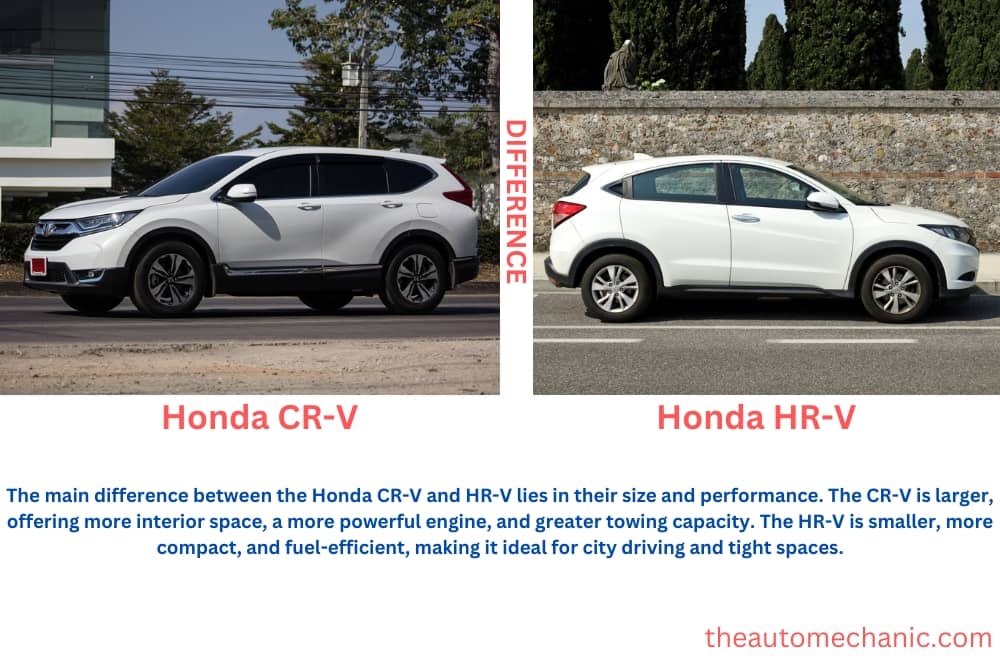Nothing could be better than cruising in your car with your loved ones to explore the beauty of life. Investing in your dream vehicle can be more fruitful when it is done after a thorough assessment.
One should not forget to consider the requirements and compare the best models in the segment.
The Era of Crossovers
Honda’s CR-V and HR-V might look similar but have significant differences. Both were designed with two disparate customer groups in mind.
Though there is no considerable price gap between these crossovers, the following are the prime dissimilarities.
Aesthetic Appearance
The Honda CR-V flaunts a youthful and sporty exterior alongside a sharper facelift. Besides, the redesigned bumper complements the front end of the car.
The L-shaped tail lamps on the rear side are simplistic and elegant. This model’s mature appearance makes it ideal for elderly buyers.
On the other hand, the Honda HR-V is slightly more upright in terms of proportions because of its smaller size. It also features the ever-youthful frontal end.
Further, it has rear door handles mounted vertically. On the backside, there is also a hatch spoiler and pointed taillights.
Fuel Economy
The Honda CR-V boasts a 1.5-liter turbocharged engine with four cylinders accessible in a single state of tune. Moreover, the horsepower and torque are rated at 190 hp and 179 lb-ft, respectively.
The engine has a CVT gearbox with all-wheel drive and FWD integrations.
The EPA’s rating for an FWD with CVT is 28 MPG per city and 34 MPG for a collective rating of 30 MPG. The turbo motor is rated at 33 MPG highway and 27 MPG city, for a joint rating of 29 MPG.
The Honda HR-V has a 1.8-liter four-cylinder engine that produces 141 hp and 127 lb-ft of torque. Though some variants also possess a turbo-engine, it is subject to availability in the particular region. There is a single CVT transmission choice.
EPA’s rating for FWD HR-V alongside the CVT stands at 34 MPG highway, 28 MPG city, and 31 MPG combined. Furthermore, HR-V AWD’s rating is 27 MPG city, 29 MPG collective, and 31 MPG highway.
Size and Space
One can consider the CR-V a midsize crossover as it offers more space for cargo and passengers. The cargo room is 39.2 cu-ft, with an overall passenger volume of around 102.9 cu-ft.
It can easily accommodate five persons at a time. The front and rear legroom are 41.3 and 40.4 inches, respectively.
HR-V is a compact crossover with a cargo space of 24.3 cu-ft and an overall passenger volume of 100.1 cu-ft. Moreover, the front and rear legroom are 41.2 and 39.3 inches, respectively.
Magic Seats is the answer if you are speculating about the difference between a Honda CR-V and an HR-V.
This exceptional feature of the HR-V enables the user to flip up the cushions of the rear seat, which facilitates the user’s holding of taller items.
Technical Features
The CR-V consists of a safety suite driven by Honda Sensing. Additionally, it has an accident-alleviation braking system, lane-keeping assistance, and forward crash warning.
Other than these, it includes road departure ease and adaptive cruise mechanisms. However, the additional safety features are automatic high-beam headlamps and a multi-angle reversible camera.
The EX trim allows for the detection of blind spots. It also has a 7-inch display audio screen and Apple CarPlay.
Besides these, Android Auto and remote engine start are available from the EX trim. Most importantly, two USB ports for fast charging are also provided at the back.
HR-V is also well-equipped with Honda Sensing, which has adaptive driving control and road departure mitigation.
In addition to these, there is crash mitigation braking, lane-keep assistance, frontal collision, and lane exit warning.
A 5-inch display audio system with Android Auto and Apple CarPlay is provided. An upgrade to a 7-inch system is available.
However, it has a lane watch system in which the camera on the right side’s mirror shows the blind spot. Usually, it happens when the signal for the right turn is on.
The new touring variant of the HR-V features automated LED headlamps, digital traffic displays, and a HomeLink garage remote. Other striking features are voice recognition and a navigation system driven by the Honda Satellite.
Driving Integrations
In addition to its athletic looks, the CR-V flaunts a rigid construction similar to that of a truck. Another great thing to consider is the advanced suspension system that facilitates a smooth ride.
Likewise, the heavy and agile steering adds to the driver’s convenience.
Still, what is the difference between a Honda CR-V and an HR-V regarding integrations? The HR-V is relatively easier to handle, drive, and park.
Most driving integrations of CR-V are entirely parallel to CR-V. However, if you prefer to have a sporty car that offers fine-tuning, then CR-V is the best option. On the other hand, if you like to keep it simple, nothing could be better than HR-V.
Conclusion
Honda’s crossovers, the CR-V and HR-V, are famous for good reasons. Selecting one amongst them is undoubtedly a challenging task.
For this, you must find out what the difference is between a Honda CR-V and an HR-V. Similarly, you must be clear about what you want out of the car.
If you require more space and powerful engine performance, then the CR-V would be suitable for you. Conversely, if you do want extra space, then the HR-V would suffice.
Besides being affordable, HR-V offers reliable performance without compromising much on quality and features.

Bruce William is a professional content writer and vehicle engineer with extensive car maintenance and repair knowledge. His expertise spans all vehicle parts, offering practical solutions for various automotive issues. Bruce provides valuable insights through his website articles to help readers maintain their cars for optimal performance and longevity.

